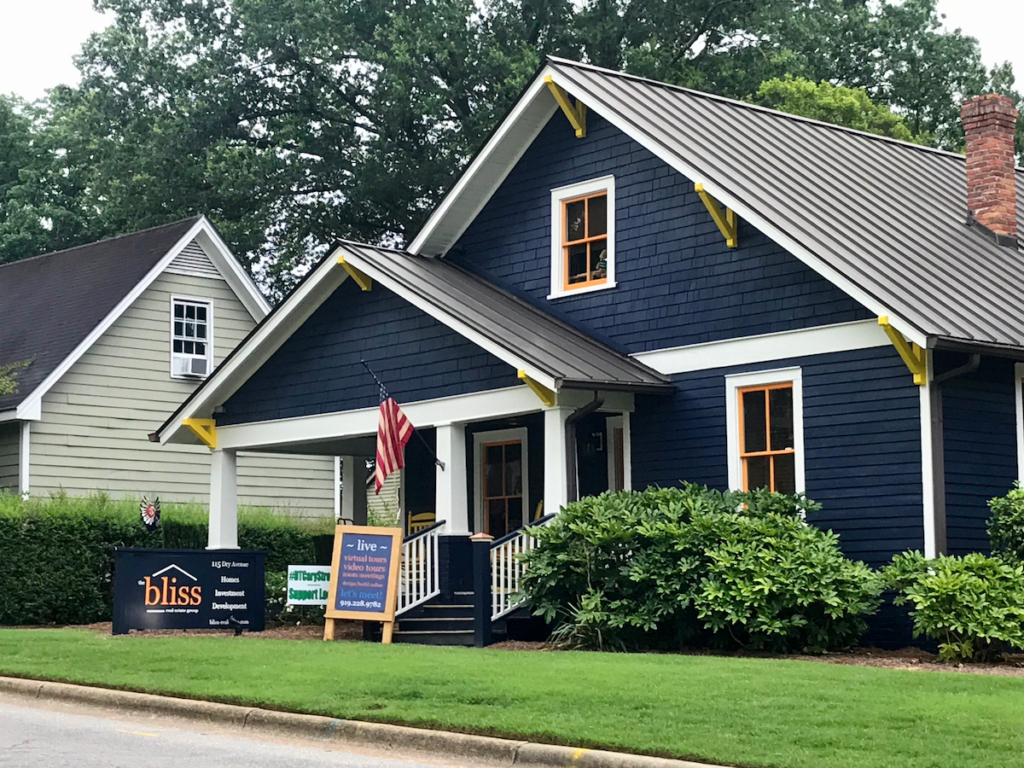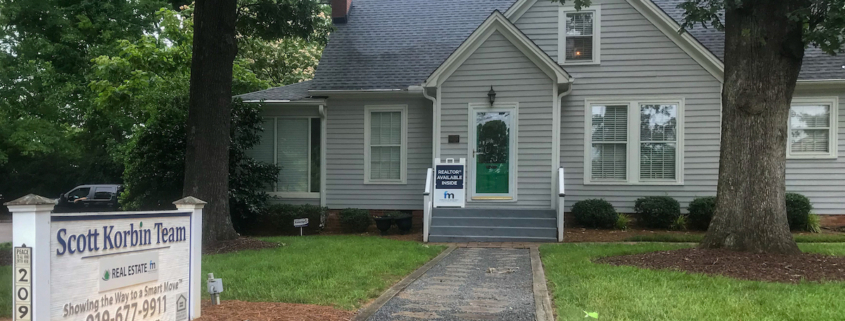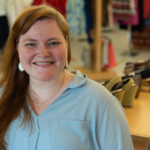Cary Realtors Talk New Methods & the COVID-19 Market
Cary, NC — When you picture a meeting with a real estate agent, you think of a handshake at the door and an in-person walkthrough of a home. To get an idea of how this typical interaction and the Cary market have shifted these last few months, I asked local realty company owners to chime in.
The New Touring Experience
Virtual
Scott Korbin, lead broker of an FM Realty office in Downtown Cary says the most significant impact during COVID-19 has been in the volume of showings with a 60-70% drop from mid-March to the end of April. This dramatic drop caused Korbin and brokers across the country to rely more heavily on technology than before.
As a decades-long user of WebEx, Korbin says that along with other video conferencing platforms like Zoom have been a big help in bringing the showing experience to clients in a safe, new way.
“It’s so much more convenient, it minimizes interruptions, it’s face-to-face pure focus and if you have multiple people on the call, you’re able to engage everyone at the same time on an equal playing field,” said Korbin.
Live video tours have even included agents showing even the attics, crawlspaces and oddly enough – smells. The only thing Korbin finds that can’t be translated to potential buyers through video is the smell of a home.
“I find myself having to take the mask off and tell them honestly what the houses smell like,” said Korbin. For those curious, the common smell descriptions are new house smell, cat, dog, mold and odorless.
Keith Bliss, Owner of Cary’s Bliss Real Estate Group said for his company, they’ve also been experimenting in virtual open houses, but haven’t seen an increased number of views. He contributes this find to being very active online before the pandemic.
“One of the things I’ve found is that clients and prospective clients are more accessible to us during COVID than they were before. Typically brokers have to be ready for after-hours work, but the more people working from home and traveling less, there are more efficiencies in the process,” said Bliss.
In-Person
The brokerage community in the area came together to discuss the safety measures necessary to show houses in-person through the Raleigh Regional Association of Realtors. According to Korbin, the way forward was agreed upon in three main areas:
- Home should undergo a very thorough cleaning before going onto the market
- People who come to tour would be limited to individual showings with no overlap
- Agents would be directed to go beyond photos and conduct video tours using Zoom and other tools
In practice, Korbin’s team does a thorough job to eliminate any sort of human contact from the client. This includes booties around shoes, no outside items in the house and an agent goes in ahead of time to sanitize and turn on all lights and open all doors. Masks are also required while viewing.
Impacts of COVID-19 in Cary’s Real Estate
This sudden change in environment for all residents has caused many people to reconsider their housing priorities. According to Bliss, people have shifted their mindset to the potential of future lockdowns and if they have enough space or multi-use spaces in the home.
“The number one downsizing trend is people realizing they don’t need a dining room. That has been a trend for the last 10 years and it may shift dramatically because that room can be shifted into a home office or a homeschooling room or whatever is needed,” said Bliss.
Looking at the data a bit more down the road of the pandemic now, Bliss has noticed more and more that fewer folks seem to be looking at making a move versus adjusting their current home to meet a family’s changing needs.
According to Korbin, the initial wave of COVID-19 related changes fell around homes for resale with occupants still in the home.
“In those cases, most of those literally shut down because the individual owners did not want to have anybody coming through their home and run the risk of infecting anyone in the house,” said Korbin.
On the flip-side, opportunities were created for homes on the market without occupants. Combining a lower risk of infection with a lower number of competing properties, Korbin says this was one of the first positives to come after the virus.
The Current Market

All in all, the Cary market bounced back quickly. Korbin says homes in and below the $400,000-$500,000 price point have frequently been selling in a matter of days.
Bliss says the median amount of days on the market in Cary is 6 for houses closed in the last 90 days. Median days on market for homes under contract is 13 while the median for homes not under contract and still available for sale is 40 days.
“The median price point of properties under contract is just under $400,000 whereas the median list price is $525,000. So, the “entry-level” or lower price point of the market for Cary is just as hot as ever and it’s rarer to see one come on the market,” said Bliss.
On the client relations side of the equation, Bliss says another big shift has been using this pause to go a bit old school by reaching out more to past clients to get in touch and seeing how the company can be of assistance.
“We want to know how we can help our clients with home improvement projects needed to adapt to the COVID lifestyle or to make sure they’re being safe and they’re healthy. We want to make sure that if they’re struggling gin any way that we can help them, not necessarily by buying or selling their piece of property,” said Bliss.
Inventory Trending Down, Demand Trending Up
Commenting on any down-ticks of sales, Korbin says the primary reason is nothing to do with demand and everything to do with a lack of inventory. In his comments, Bliss agreed.
“We are absolutely seeing an increase in out-of-state people that no longer have to work in larger cities. You can see that just driving around looking at license plates,” said Bliss.
Korbin added, “If you thought people were moving to Cary, North Carolina prior to COVID, it’s on steroids now.”
As inventory shrinks, home values are on the rise. Korbin says homes are just not being built fast enough to keep up. The data is all very close to normal for this time of year and he says closings are not missing a beat despite the change-up in tours and meetings.
“I anticipate continued strength, particularly in the residential and office markets. I think you’re going to see a weakening in the hospitality, hotel and restaurant industries but a strong demand in the industrial, commercial, medical and warehouse spaces,” said Korbin.
Bliss also remains optimistic, saying, “It’s exciting for us to look at the future of real estate way differently now and ask ourselves what future real estate agents will need.”
Story and photos by Ashley Kairis.
All the Cary news every day since 2009. Subscribe by email.



